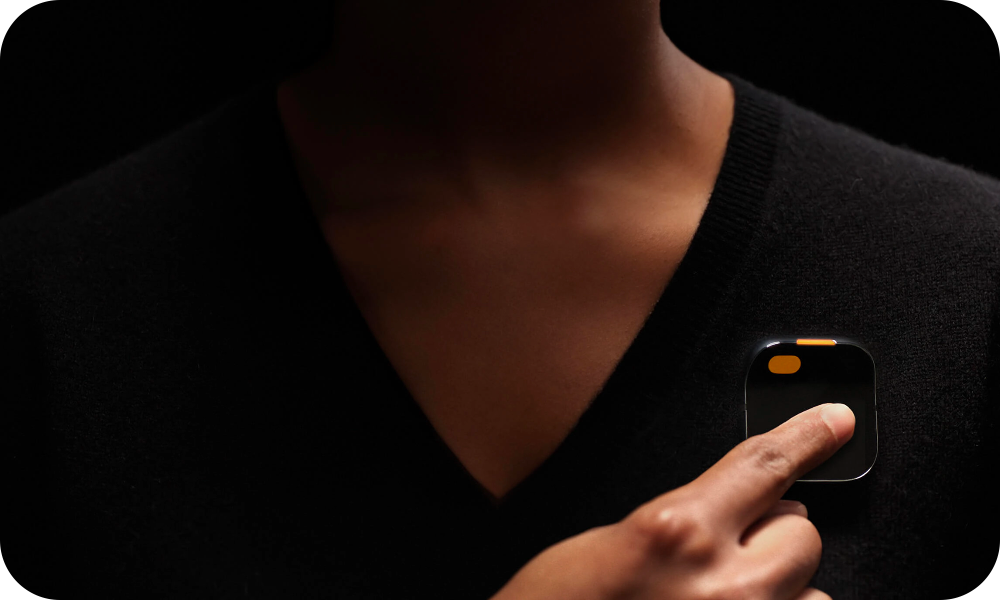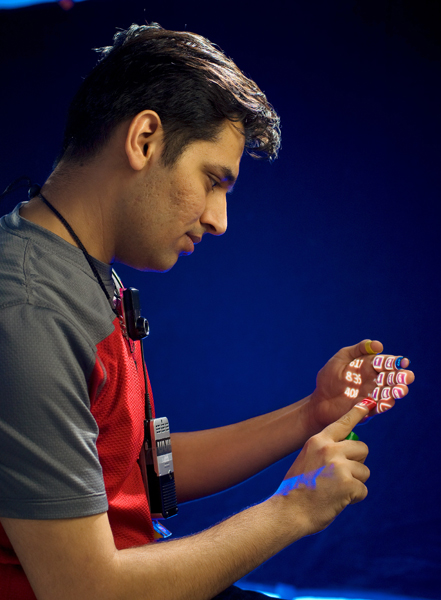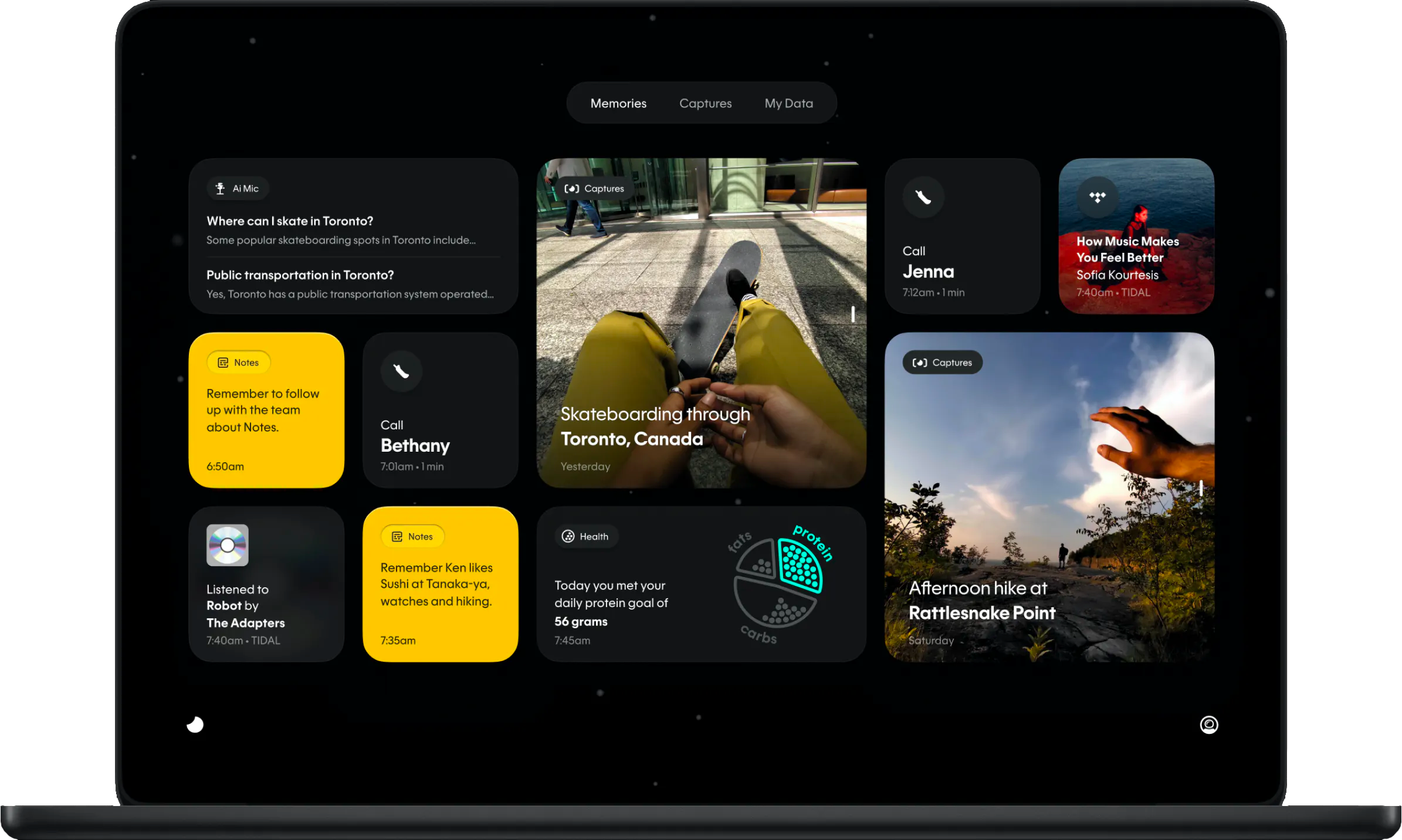Humane's Ai Pin

Humane is a 2017 startup launched by a husband-and-wife team, Imran Chaudhri and Bethany Bongiorno who used to work for Apple. Humane’s flagship product is Ai Pin, a new type of standalone device with a software platform that uses AI for personal computing experiences.
First of all, kudos!
Humane founders were able to convince larger group of investors about their idea of new kind of a computing device in new form factor and a potentially new idea of interaction with it; hired great designers, hardware engineers and software developers; built a platform and services around it. And, above all they shipped that consumer device! Kudos!
An idea of this size could die at any step and not see light. Sure, it must have been a tough journey and they must have enjoyed building Ai Pin. Congratulations.
Timeline of Ai Pin (click/tap to expand)
- Humane raises a $30,000,000 series A round from Kindred Ventures, Lachy Groom, Marc Benioff, Plexo Capital, Sam Altman and Valia Ventures.
- Humane raises $100,000,000 in Series B funding round, led by Tiger Global Management, with participation from SoftBank Group, BOND, Forerunner Ventures, Qualcomm Ventures LLC, Sam Altman, Lachy Groom, Kindred Ventures, Marc Benioff’s TIME Ventures, Valia Ventures, NEXT VENTŪRES, Plexo Capital and Wilson Sonsini Goodrich & Rosati.
- Humane raises a $100,000,000 series B round from Forerunner Ventures, Kindred Ventures, Lachy Groom, Next Ventūres, Plexo Capital, Qualcomm Ventures, Sam Altman, Tiger Global Management, Time Ventures, Valia Ventures and Wilson Sonsini Goodrich & Rosati.
- Humane raises a $100,000,000 series B round from Forerunner Ventures, Kindred Ventures, Lachy Groom, Next Ventūres, Plexo Capital, Qualcomm Ventures, Sam Altman, Tiger Global Management, Time Ventures, Valia Ventures and Wilson Sonsini Goodrich & Rosati.
- Humane using Android to build what looks to be an AR wearable with laser projected 'display' for any surface.
- Humane raises a $100,000,000 series C round from Kindred Ventures, LG Technology Ventures, Microsoft, Qualcomm Ventures, SK Networks, Sam Altman, Tiger Global Management and Volvo Cars Fund.
- Humane launches Ai Pin.
Wearable Computers and the comfort of wearing them

Wearable computers usually, but not always, need to be smaller and lighter. So does the processor, battery and circuitry. The wearable computers (say, smartphones) are bigger because we need to interact with them comfortably using buttons or displays. If you remove the screen, the battery would have to be just small enough and the circuitry has already been smaller with great processors. For example - the Google Glass or Apple Watch.
The smaller form factor would not always guarantee comfort of usage. Google Glass caused so much discomfort wearing it where as Apple Watch is comfortable to wear. Also, you want to carry that “wearable” computer with you always and move freely in the space around you - like Apple Watch. Apple’s Vision Pro would not be comfortable too to move around wearing it.
Humane’s Ai Pin is a wearable computer that is very comfortable to wear, carry and move around.
When there are no screens or buttons, the interaction is the question.
Interaction with Ai Pin

As per Imran Chaudhri’s TED talk, Ai Pin uses “a range of sensors that enable contextual and ambient compute interactions.” One will have to use voice commands and gestures to be able to interact with it. It can recognize objects around it, such as food nutrition labels.
No apps. Just AI experiences on device and the cloud.
As demoed by Bethany Bongiorno in the above video, using the built-in projector and depth sensor(s), Ai Pin can project an interactive interface onto nearby surfaces. The surface could be your palm, a paper or a table’s surface. The user can interact with the display by making hand gestures like tilt-and-roll and close-pinch. While holding the touchpad, user can ask it anything. Holding down the touchpad with two fingers enables the interpreter. Also, user can use familiar gestures like touch, tap, and swipe to answer calls, control the volume and more. Click a picture by double tapping the touchpad with two-fingers.

The first wearable computer that came in my mind talking of comfort and a projector is Pranav Mistry’s 2009-year’s Sixthsense, a device that uses a camera and a projector.
Technology and implementation wise it might be very different from Ai Pin. But, basic essence and user’s experience would be same.
Calls, Texts, Photos and Music
Press with one finger and hold the surface of Ai Pin to ask it something.
- say “Catch me up” to have text & voice messages and emails to be read back.
- say something like “Play some rock that talk about life” to have Ai Pin play rock music. Humane partnered with Tidal music streaming service for AI driven music experience.
- say “can I eat this?” by holding a fruit or a food item. Ai Pin would respond relevantly. Also you can setup your health goals to it and it considers.
- To send text message, “tell dad, ‘I will post the book by today evening’”
- Press the surface with two fingers to capture the moment as you see it.

Humane.Center is the home to your photos, notes, lists, Health setup, and more. Users can see their memories, organize stuff and manage preferences on it. This is hosted on Vercel.
Cosmos Operating System
Cosmos (stylized as CosmOS) operating system is based on Android. Humane claims that Cosmos has a groundbreaking AI frameworks that transform how cloud software interacts. And, they call it “Ai Bus”. The idea is to eliminates the era of apps, downloads, their management etc. Ai Bus quickly understands what you need, connecting you to the right Ai experience or service instantly.
At user level, Ai Bus runs laser ink display, natural language processing and voice on high priority.
Privacy
Two of the reasons of the Google Glass failure are the discomfort of wearing it and the psych around the camera always pointing at others.
The main critique of Google Glass wasn’t really that they looked stupid (although, to be clear, they did). People were kicked out of bars for wearing Glass because the device represented a form of ubiquitous recording. Glass was outfitted with a camera that the user could activate at any time, and this, rightfully, freaked people out. - Wired magazine.
The promise of this wearable computer powered by AI is that it would quietly collect data and information and builds knowledge about your life and turn them into actions.

Ai Pin has Trust Light that indicates if it is scanning, using mic or camera.Besides this, the Ai Pin does not always have mic on to recognize “wake up” words like “Ok, Google”, “Alexa” or “Hey, Siri”. The device needs you to tap the device with one or two fingers depending on the intent to turn on the mic or the camera.
Developers, ecosystem and the future of Ai Pin
Microsoft’s Windows Phone and the platform failed for several reasons.  One of them is that there is almost no interest from independent or enterprise developers to make apps for that platform. The interest was minimal. By the time Windows Phone is released, iOS and Android were already ubiquitous. And, usually the platform wars happens between two parties. The third contender would not really sustain, mostly.
One of them is that there is almost no interest from independent or enterprise developers to make apps for that platform. The interest was minimal. By the time Windows Phone is released, iOS and Android were already ubiquitous. And, usually the platform wars happens between two parties. The third contender would not really sustain, mostly.
Now, for Ai Pin, to keep the platform alive, developers need to embrace it and develop the AI experiences for it. I am eager to see what this new computing platform becomes and the future of it. I wish more developers build AI experiences for this.
Obviously, the development environment would be Android based as Cosmos runs on Android. Public SDK will be available soon, I hope! Developers adapted Android development as the primary development language was Java which was prominent at that time. Can’t wait AI experiences developers would build for this platform.
the cosmos platform was built so that we can constantly be shipping new ai experiences as they become available - and i'm excited about the future where anyone can use a public SDK to build something they want to see on cosmos. we are in the very early stages of a very different…
— Bethany Bongiorno (@bella_bongiorno) November 22, 2023
Some more thoughts
-
Even though Bethany Bongiorno mentioned in her tweet that it is not their goal at all to solve smartphone addiction, I really would use it just to avoid my smartphone :). No one is going to learn and control themselves from screen time measures :). People, including kids, have been having hard time time to escape from infinite scrolling. My mom sends me funny videos or jokes late in the nights :).
-
I am up for the “all cloud” architecture of it.
 But, those chips with the disk that is running the Android based CosmOS is capable of driving a display. Connecting the device to a display and using it like a desktop is another experience. Just like Samsung’s DeX or HP’s Elite X3.
But, those chips with the disk that is running the Android based CosmOS is capable of driving a display. Connecting the device to a display and using it like a desktop is another experience. Just like Samsung’s DeX or HP’s Elite X3. -
We quickly look at the pictures that we take just to “review” it. We wanna see how the picture is. A display is needed for it. You can’t do that with this device.
-
I don’t think video calls would be a good experience on this device. You would have to turn the device. But, hey, we do the same on smartphones too.
I will keep updating this article when something mentionable happens about this device. I love what they built. And, I am eager to see what this platform grows into. I wish the very best to the teams at Humane.